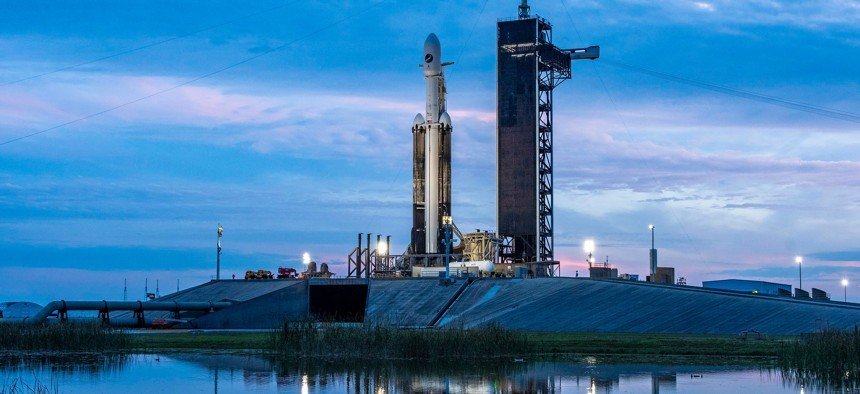
A SpaceX Falcon Heavy rocket launched a U.S. Space Force X-37B Orbital Test Vehicle from Kennedy Space Center Launch Complex 39A. Credit: U.S. Space Force
By Sandra Erwin,
Published by Space News, 11 March 2024
The Pentagon in its 2025 budget proposes $29.4 billion for the U.S. Space Force
WASHINGTON — The Pentagon rolled out a $849.8 billion budget request for fiscal year 2025 that includes $29.4 billion for the U.S. Space Force.
The $29.4 billion request represents a $600 million cut from the $30 billion the Defense Department sought for the newest military branch in fiscal 2024 – a plan that remains in limbo as Congress has kept the government funded via a series of stopgap spending bills.
Congress on February 29 passed the fourth continuing resolution for fiscal year 2024 extending funding for Defense and other federal agencies at 2023 levels until March 22.
The Biden administration is putting forth a 2025 defense budget request as defense spending faces a possible cut set by the Fiscal Responsibility Act of 2023, legislation that Congress passed last summer capping discretionary spending across the board for fiscal years 2025 and 2026. Further, the act stipulates automatic across-the-board cuts if Congress fails to pass full-year appropriations measures by the end of April.
Todd Harrison, defense budget analyst and senior fellow at the American Enterprise Institute characterized the Space Force’s budget as “business as usual” that essentially matches the funding projections the Pentagon put out a year ago.
“Last year they projected $29.5 billion for the Space Force in fiscal year 2025,” said Harrison. “This request is pretty close to that.”

Air Force Secretary Frank Kendall said during a meeting with reporters that the 2025 request is an “acceptable” budget for the Space Force, but not an optimal one, The proposed funding allows key space programs to move forward but not quite at the pace that DoD would like to stay ahead of the Chinese threat, said Kendall.
The backdrop for DoD’s budget request is China’s accelerated pace of technological innovation in space, which DoD views as a “pacing threat.” Another concern for the Space Force is boosting the resilience of U.S. space networks, as the U.S. has to prepare for the possibility of an armed conflict if the People’s Liberation Army, as strategists speculate, attempts to seize Taiwan later this decade.
Kendall noted that much of the new technology in the Space Force’s budget seeks to improve the resiliency of U.S. satellite networks against Chinese and Russian threats — including ground-based lasers, cyber capabilities and other systems designed to obstruct or destroy U.S. military satellites essential for intelligence gathering, communications and missile tracking.
“We’re making progress on resiliency and on counter space,” Kendall said. “But I’d like to move faster.”
“We’re doing the best we can with the constraints we face,” he added. “Also, the pace at which we move is the pace at which industry can design and build things.”
Commercial services
While the Space Force budget remained relatively flat, many in the commercial space industry will be disappointed it did not create new funding lines for emerging services like satellite-based Earth monitoring, in-space surveillance, and on-orbit satellite servicing, said Harrison.
DoD is still buying many of the same systems from the same companies they have for decades, he said. The budget does not show any real strategy for taking advantage of cutting-edge space capabilities being pioneered by newspace companies, Harrison added.
Space Force officials have pointed out that the service funds commercial satellite communications and launch services as it has for years. The 2025 budget includes $1.8 billion for National Security Space Launch missions. But those are considered traditional services by the burgeoning newspace industry, which wants defense dollars to go toward more novel offerings.
“When we talk about commercial services, we mean things like employing commercial sensors for earth and space domain awareness, using commercial robotics for satellite repair and maintenance, that kind of thing,” said Harrison.
Space Force officials have said opening new commercial services budget lines would require broader approval and oversight from Pentagon leadership and Congress — a heavy bureaucratic lift unlikely in a budget cycle focused on fiscal constraints.
The fastest adoption of commercial satellite technology is taking place in the Space Development Agency, a Space Force organization building a low Earth orbit constellation for military communications and missile tracking. The agency’s 2025 budget includes $1.7 billion to continue the development of SDA’s satellite architecture.
See: Original Article





